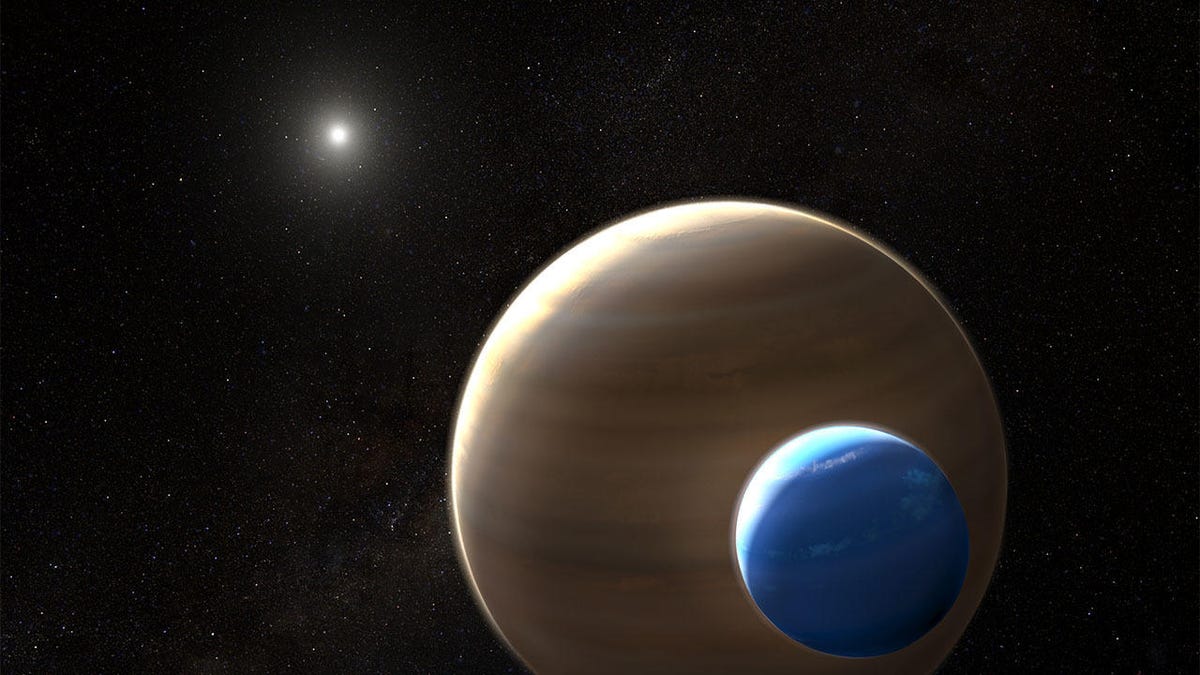Astronomers discover new miniature, runaway moons they've dubbed "ploonets"
Moons that escape and become planets get a charmingly goofy nickname.

NASA released this illustration of what an exomoon might look.
Dear Diary, I dream of one day running away from my home in orbit around my gas giant planet, which is now migrating ever closer to our solar system's star. Thanks for the push, gravitational forces! Soon I will be free from my planetary orbit and I will no longer be just another moon. I will break away and become ... a ploonet!
If you're getting "moonmoon" vibes from this whole ploonet thing, you're not alone. The term combines the words "planet" and "moon" to describe a hypothetical moon that breaks away from its host and became its own kind of small planet.
Ploonets are now a thing thanks to a paper submitted for review to the Monthly Notices of the Royal Astronomical Society journal. It's called Ploonets: formation, evolution, and detectability of tidally detached exomoons.
Astrophysicist Mario Sucerquia, the lead author, said he and co-author Jorge Zuluaga created the nickname "because we pretended to capture in a single word the entire biography of these objects: planets with a moonish origin." He said he finds the term "captivating."
The scientists considered going with "moonets," but wanted to reinforce how they end up as planets.
The researchers ran simulations of a large exomoon (a moon located around a planet in another solar system) orbiting a gas giant (think of a hot Jupiter) that's moving ever closer to its star.
The simulations didn't end well for a lot of these hypothetical moons, which faced demises including crashing into their own planets or burning up in the star. But some survived in the simulations to achieve their own orbits around the star. Voila, ploonets!
Astrophysicist Heloise Stevance, who was not involved in the paper, created and tweeted a helpful infographic to explain how this all works.
Hey peeps!😃
— Dr. Héloïse Stevance 💖💥 (@Sydonahi) July 10, 2019
I was inspired by the Ploonet news yesterday to go back to making infographics!
So here is a summary of Ploonet formation!🌑
Hope you enjoy 💖🙏
Also just like the other ones it is free to use and modify!#ploonets #scicomm #sciart #astronomyfact #sciencetwitter pic.twitter.com/ZLxXwURDXX
As Stevance points out, ploonets are likely to live fast and die young.
If you'd like to immerse yourself in all the juicy astrophysics details of ploonets, be sure to check out Sucerquia's own Twitter thread on the matter. He discusses how we might able to spot ploonets, some of which could end up looking like giant comets or just regular exoplanets.
The last paper submitted to the ArXiv by our team shows that regular exomoons orbiting close-in giant planets are tidally unstable, and prone to be unavoidably expelled from the planet’s orbit to circumstellar locations.
— Mario Sucerquia (@MarioSucerquia) July 1, 2019
https://t.co/1uLL2qctre (Follow the thread) pic.twitter.com/g1hVqgYtGo
But here's the kicker: "The Earth's tidal strength is gradually pushing the Moon away from us at a rate of about three centimeters per year," he tweeted. "Therefore, the moon is indeed a potential ploonet!"
Fine then, I'll see you on the dark side of the ploonet.
Originally published July 10, 9:04 a.m. PT.
Update, 3:08 p.m. PT: Adds comment from lead author of paper.

